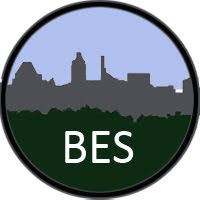
Ecology Of the City is Twenty Years Old
The phrase "ecology ofthe city" was introduced in 1997 as a simple rhetorical device to highlight the novelty of the approach to urban ecology adopted in the initial proposal for the Baltimore Ecosystem Study LTER (Pickett et al. 1997). …

Outcomes of an Urban Sustainability Research Network
From 2011 through 2017, the National Science Foundation (NSF) supported a collaborative research project on "Urban Sustainability: Research Coordination and Synthesis for a Transformative Future." This project was jointly organized and…

What Is a[n Urban] Watershed?
Watershed are urban featuresWatersheds in Baltimore Watersheds are important parts of both wild and civilized places. In both city and countryside, watersheds express the flow of water, with its power to connect places, its ability to…

Ecology for the city also means with
Ecology In the City The growth of modern urban ecology has been marked by a differentiation among ecology in the city to ecology of the city, to ecology for the city (Childers et al. 2015, Zhou et al. 2017). This scheme is intended to…

Seeking Nuance in the Human Ecosystem: Built Versus Constructed
Parts of Any Human Ecosystem There are four components of human ecosystems: biological, physical, social, and built. They are all necessary categories for human ecosystems, by definition. The one-word label for each is a convenient…

Asphalt: Evolving Urban Boundary Object
Asphalt. What could be more pedestrian, literally underfoot? Or ignored as a dull gray ribbon somewhere beneath the floorboards as one navigates along city streets, concentrating on one's destination? Or still more invisibly,…


